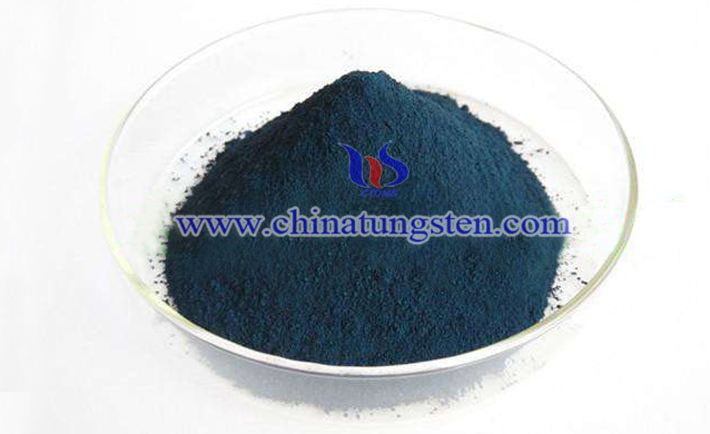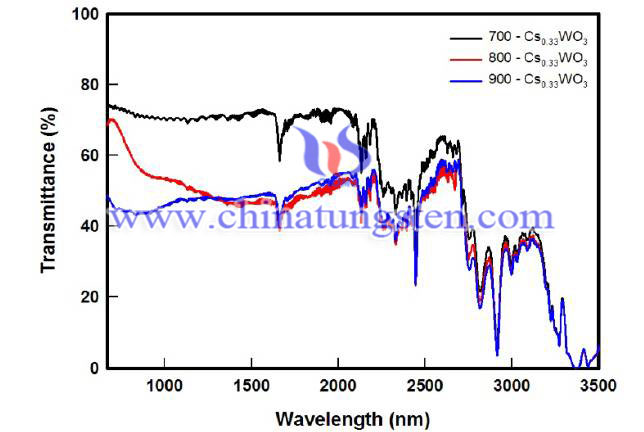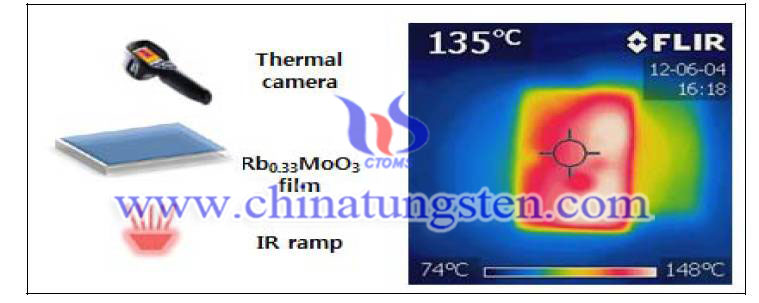Effect of Cs0.33WO3 for Near Infrared Cut-off Characteristics
- Details
- Category: Tungsten Information
- Published on Wednesday, 17 July 2019 10:19
The heat-shielding properties of their films were investigated by near infrared spectrometer. Synthesized Cs0.33WO3 particles with annealing at 800 ℃ typically formed hexagonal tungsten bronze structure for good absorption of NIR, size observed as being 30-100 nm and <150 nm. Especially, remarkable absorption of NIR wavelength ranges makes ceramic composite films good candidate for use as a heat shielding window, it clearly shows useful for applications where heat shield is required.
The various nanoparticles have been investigating the continuous and new methods to reduce solar heat as it ensures a potentially low-cost and high-productivity solution. Not only does it needs high transmittance of ultraviolet radiation but also achieves complete shielding of infrared solar radiation can be used for solar control windows. In the other word, an effective IR absorbent should have high absorbance as well as a broad working wavelength.

This kinds of materials to realize the purpose is the nanoparticles of transparent oxide conductors with heat-ray cut-off effect such as tin doped indium oxide (ITO) and antimony doped tin oxide (ATO). They also are well known to provide highly transparent solar filters to absorb heatray by the effect of the plasma vibration of the free electrons, as typically observed in gold and silver nanoparticle solution. However, ITO can only shield the IR wavelength ranges longer than 1500 nm as well as indium is an expensive metal resource.
In recent years, for practical application, tungsten bronzes actively have been investigating due to their interesting electro-optics, photochromic, electrochromic, and superconducting properties. Tungsten trioxide (WO3) has a wide band gap of 2.6-2.8 eV5 and is transparent in the visible and NIR ranges. A metallic conductivity and a strong NIR wavelength absorption can be induced when free electrons are introduced into crystals by either decreasing the oxygen content or by adding ternary elements. The oxygen deficiency in tungsten oxides leads to a complex-ordered structure known as the Magneli structure, while the ternary addition of the positive ions leads to the tungsten bronze structure. In other words, tungsten bronzes MxWO3 with doping small ions such as H+, Ag+, Li+, Na+, K+ and Cs+ into WO3 have better optical and electrical properties. The picture exhibits the properties of NIR absorption with different annealing temperature.
It has been reported that the tungsten bronzes with the hexagonal phase are of particular interest in the application of electrochromic devices owing to the relatively high diffusion coefficients of hydrogen ions and metal ions compared with those of the orthorhombic phase and pure WO3. On the other hand, as for the Cs-doped WO3, the superconductivity of CsxWO3 prepared by reported that CsxWO3 with 0.3 ≥ x ≥ 0.19 was a 3D superconductor, a transition from a metal to an insulator occurs at x <0.19, and a 2D superconductor was formed at x=0.05. In addition to, the hexagonal tungsten bronze phase of Cs0.33WO3 was regarded as being highly attractive in solar filter applications because of its strong absorption in the NIR wavelengths.

Because the perovskites-based nanomaterials exhibit strong absorption of NIR wavelength, it is expected to convert the absorbed radiation to local heat directly to phototherrmal conversion properties of the nanomaterials, the prepared composite film were put on a paper and then irradiated by a 250 W IR lamp for 30 s.

The temperature distribution was recorded by thermographic analysis. The measurement was performed at an ambient temperature of 25 °C. Within only 20 s, the temperature of the composite film increased from 25 to 135 °C, whereas the temperature of the other around the composite film did not rise very much, indicating the quick conversion of absorbed NIR wavelength energy to local heating energy on the composite film.
- Tungsten Oxide Manufacturer & Supplier, Chinatungsten Online: www.tungsten-oxide.com
- Tungsten News & Prices of China Tungsten Industry Association: www.ctia.com.cn
- Molybdenum News & Price: news.molybdenum.com.cn
- Tel.: 86 592 5129696; Fax: 86 592 5129797; Email: sales@chinatungsten.com



 sales@chinatungsten.com
sales@chinatungsten.com